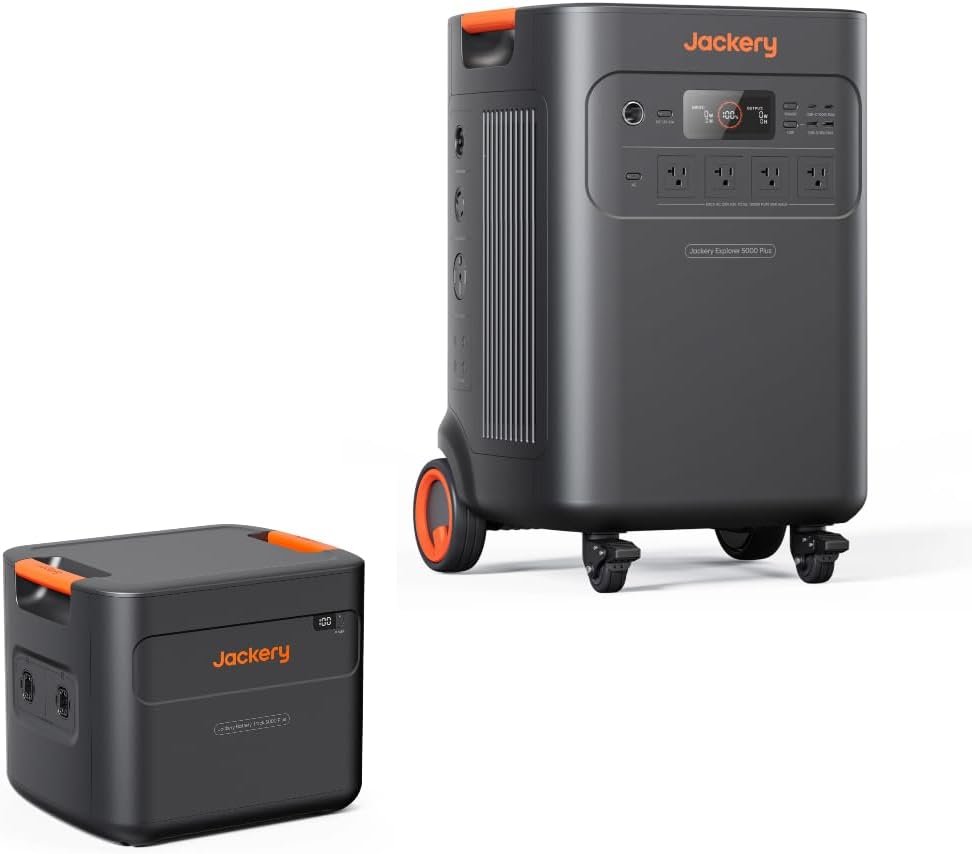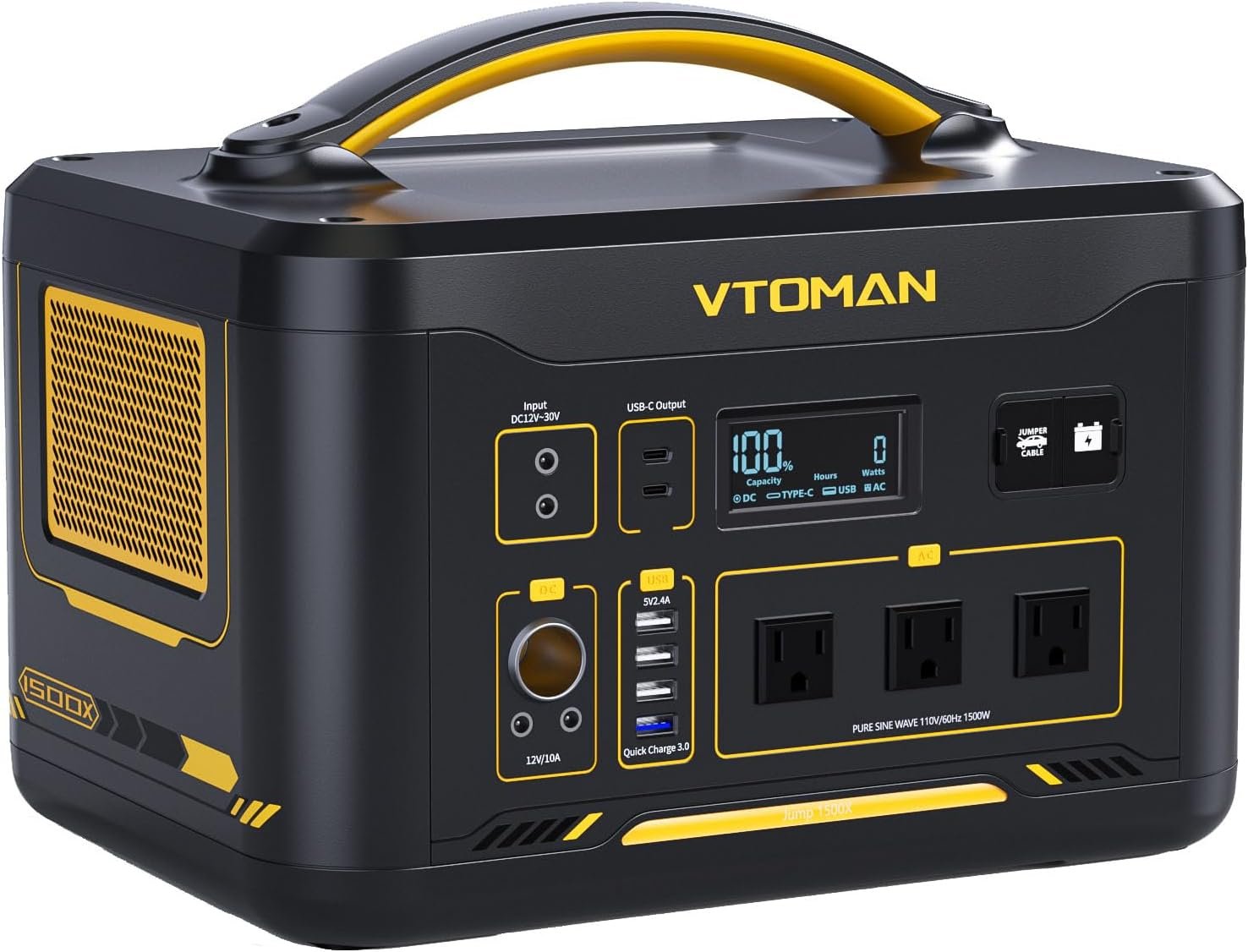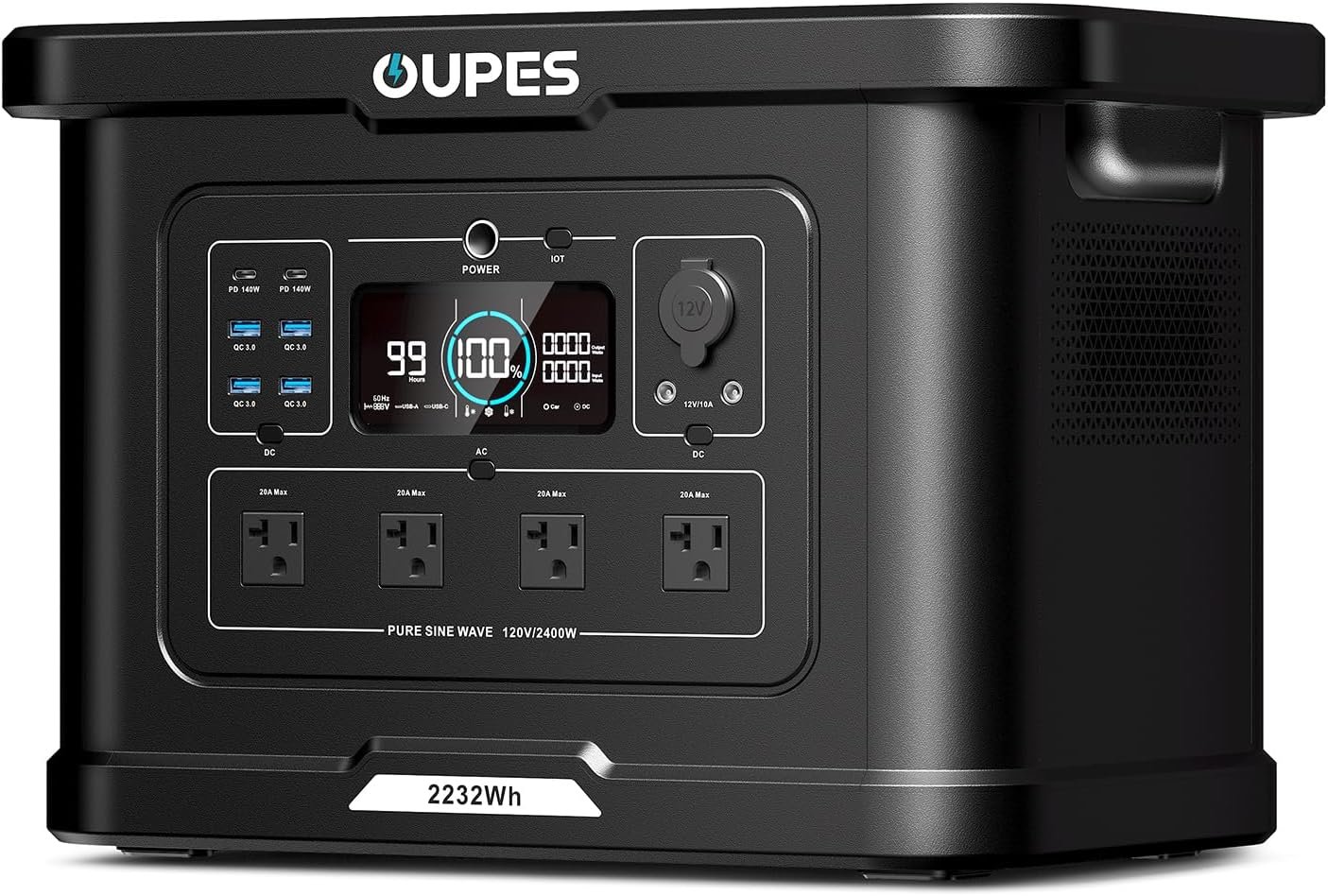Jackery Essential Home Backup: Your 2025 Guide to Unbreakable Power Security
Imagine this: you’re in the middle of a thrilling movie night, the popcorn is perfectly buttery, and the climax is just seconds away. Suddenly, the screen goes black. The hum of the refrigerator silences. The only light comes from your phone screen, which now flashes a dreaded alert: “Grid Failure.” Your heart sinks. How long will this last? Is the food in the fridge going to spoil? What about working from home tomorrow?
This scenario is becoming less of a rare occurrence and more of a regular reality for millions. In 2025, with our lives more digitally connected and climate-related events more frequent, a reliable power backup isn’t a luxury for doomsday preppers; it’s an essential home backup for modern families. And that’s where a name like Jackery enters the conversation. But is a Jackery power station truly the right solution for your home? Let’s dive deep and unpack everything you need to know about using a Jackery as your home’s guardian against the dark.

What Exactly is a Jackery Power Station? More Than a Giant Power Bank
Before we get into the nitty-gritty of home backup, let’s clear the air. If you’re picturing a loud, fume-belching gasoline generator, think again. A Jackery portable power station is, in its simplest form, a massive, sophisticated power bank. But that’s like calling a sports car a “people mover”—it’s technically true but misses the magic entirely.
Inside its sleek, often rectangular casing lies a powerful lithium-ion battery, a pure sine wave inverter, and a sophisticated charge controller. This trio works in harmony to store energy (from a wall outlet or, even better, the sun) and deliver it back to you as clean, safe, quiet, and portable electricity. It’s power on your terms, without the noise, maintenance, or carbon emissions.
Why Your Home Needs a Backup Power Solution in 2025
We live in an electrified world. A power outage isn’t just an inconvenience anymore; it’s a disruption that can have real consequences.
- Weathering the Storm (Literally): Climate change has led to an increase in the frequency and intensity of extreme weather events like hurricanes, wildfires, and winter storms, often resulting in prolonged power cuts.
- An Aging Grid: Much of the infrastructure that delivers electricity to our homes is decades old and increasingly vulnerable to overloads, especially during heatwaves when everyone cranks up their AC.
- The Work-From-Home Revolution: Millions now depend on a stable internet connection and powered devices to earn a living. A blackout doesn’t just pause your Netflix; it pauses your paycheck.
- Health and Safety: For those who rely on powered medical devices (CPAP machines, oxygen concentrators) or need to keep vital medications refrigerated, a power backup is non-negotiable for health and safety.
A Jackery solar generator kit isn’t about living off-grid in a bunker; it’s about maintaining normalcy, safety, and connectivity when the unexpected happens.
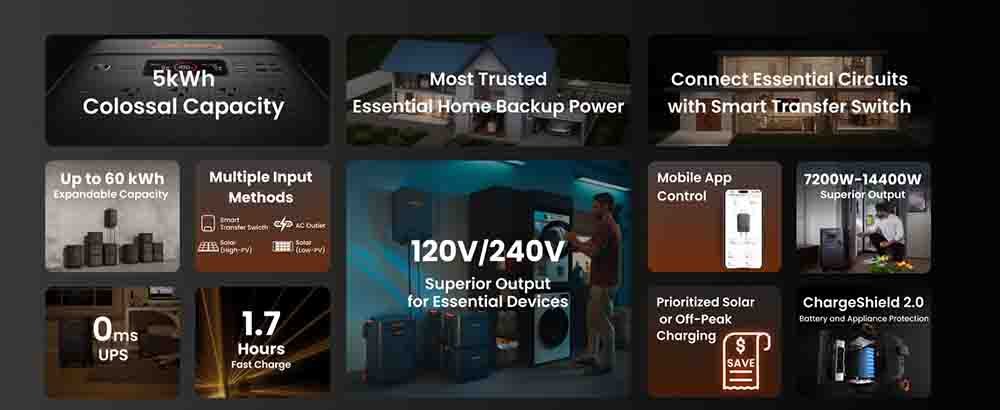
Jackery Essential Home Backup: How Does It Actually Work?
The beauty of a Jackery system is in its beautiful simplicity. You don’t need to be an electrician to get it up and running.
- Charge It Up: First, you fill the power station with energy. You can do this by plugging it into a standard wall outlet in your garage or laundry room. But the real freedom comes from using Jackery SolarSaga solar panels. Just unroll them, angle them towards the sun, and plug them into the station. It’s like filling a water tank from a never-ending, free tap in the sky.
- Store the Energy: The power station’s battery safely stores that energy until you need it. It sits there, silently on standby, ready to jump into action.
- Power Your Life: When the grid goes down, you simply unplug your devices from the wall and plug them directly into the power station. It’s equipped with multiple output ports: AC outlets (for standard plugs), USB-A ports, USB-C PD ports (for modern laptops and phones), and even a DC carport.
There’s no complicated transfer switch to install, no gasoline to haul, and no deafening roar. It’s plug-and-play power security.
Key Features to Look For in a Jackery for Home Backup
Not all power stations are created equal. When evaluating a Jackery (or any brand) for home backup, here’s your checklist:
- Battery Capacity (Wh – Watt-hours): The Fuel Tank
This is the single most important number. It tells you how much energy is stored. Think of it like the size of your car’s gas tank. A bigger tank (higher Wh) means you can power more devices for longer. For home backup, you’ll want to look at models in the 1000Wh (Explorer 1000) to 3000Wh (Explorer 3000 Pro) range or even larger. - Power Output (W – Watts): The Engine Horsepower
This number tells you what you can run. It’s the maximum amount of power the station can deliver at any one moment. A high-wattage device like a space heater (1500W) needs a station with a high output (e.g., 1800W+). A low-wattage device like a phone (5W) needs almost nothing. You must add up the watts of the devices you want to run simultaneously to ensure you don’t overload the station. - Pure Sine Wave Inverter: The Quality of the Power
This is a technical-sounding term with a simple, crucial meaning. Our home electronics are designed to run on the clean, smooth power from the grid. A pure sine wave inverter replicates this quality perfectly. Cheaper modified sine wave inverters can damage sensitive electronics like laptops, medical equipment, and fancy appliances. All Jackery AC outlets use pure sine wave technology, so your gear is safe. - Port Variety and Quantity: Your Connection Points
How many things do you need to plug in? Make sure the station has enough AC outlets, USB ports, and the right types (USB-C Power Delivery is a must for modern gadgets) to cover your family’s needs during an outage. - Solar Charging Capability: Your Off-Grid Lifeline
The ability to recharge via solar panels is what transforms a backup battery into a truly resilient power source. Check the maximum solar input the station can handle (e.g., 800W), as this determines how quickly you can recharge with panels.
Real-World Use Cases: What Can You Actually Power?
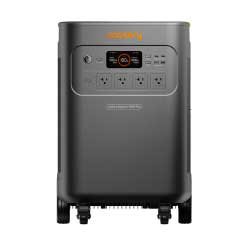 |
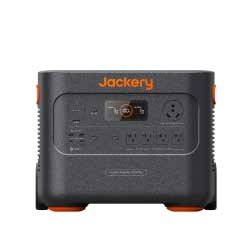 |
 |
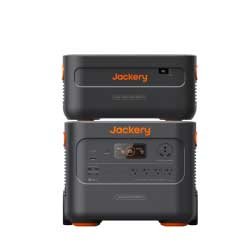 |
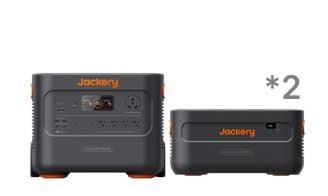 |
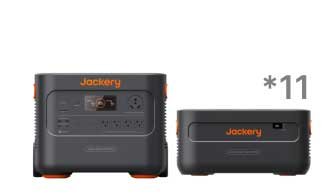 |
|
| Explore 5000 Plus | Explore 2000 Plus | Explore 3000 Pro | Explore 2000 Plus (4kWh) | Explore 2000 Plus (6kWh) | Explore 2000 Plus (24kWh) | |
|---|---|---|---|---|---|---|
| 5040Wh | 2042Wh | 3024Wh | 4084Wh | 6126Wh | 24kWh | |
| View Product | View Product | View Product | View Product | View Product | View Product | |
| Output Power | 7200W | 3000W | 3000W | 3000W | 3000W | 6000W |
| Internet Router (20W) | 215.3 Hr | 86.7 Hr | 128.5 Hr | 173.6 Hr | 260.4 Hr | 1020 Hr |
| Laptop (50W) | 86.2 Hr | 34.7 Hr | 51.4 Hr | 69.4 Hr | 104.1 Hr | 408 Hr |
| Refrigerator (100W) | 43 Hr | 17.3 Hr | 25.7 Hr | 34.7 Hr | 52.1 Hr | 204 Hr |
| Water Pump (150W) | 28.6 Hr | 11.5 Hr | 17.1 Hr | 23.1 Hr | 34.7 Hr | 136 Hr |
| Coffee Maker (1000W) | 4.2 Hr | 1.7 Hr | 2.6 Hr | 3.5 Hr | 5.2 Hr | 20.4 Hr |
| Microwave Oven (1200W) | 3.5 Hr | 1.4 Hr | 2.1 Hr | 2.9 Hr | 4.3 Hr | 17 Hr |
| Space Heater (1500W) | 3 Hr | 1.2 Hr | 1.7 Hr | 2.3 Hr | 3.5 Hr | 13.6 Hr |
| Recommended Usage | Ultimate Home Backup Solution | Backup for Short-term Power Outage | Capable of running 99% of Home Appliances | Powering Essential Devices for Hours during a Blackout | Reliable Choice for Extended Power Cuts | Ultimate Home Backup Solution |
Remember, you won’t run all these at once for the full duration. You’ll cycle through them, which is how you can make the power last for a day or more.
Jackery vs. Traditional Gas Generators: A 2025 Showdown
This is the classic debate. Here’s how a Jackery stacks up in the modern era.
| Features | Jackery Solar Generator | Traditional Gas Generator |
|---|---|---|
| Operation | Silent, fume-free. Safe for indoor use. | Extremely loud, produces toxic carbon monoxide. Must be used outdoors only. |
| Fuel | Free, renewable solar energy or grid power. | Expensive, volatile gasoline that degrades and can be hard to find in a crisis. |
| Maintenance | Virtually none. Just keep it charged. | Regular maintenance: oil changes, spark plug replacements, and stabilizer in fuel. |
| Portability | All-in-one, grab-and-go design. | Heavy, bulky, not truly portable. |
| Instant Power | Yes. Flip a switch and it’s on. | No. Requires pulling a cord to start, which can be difficult. |
| Environmental | Zero emissions. Clean, green power. | High emissions and carbon footprint. |
For urban and suburban families, the safety, silence, and simplicity of a Jackery make it the clear winner for most scenarios. A gas generator still has a place for powering entire homes with heavy-duty wiring, but for 90% of what people need during an outage, a Jackery is a superior solution.
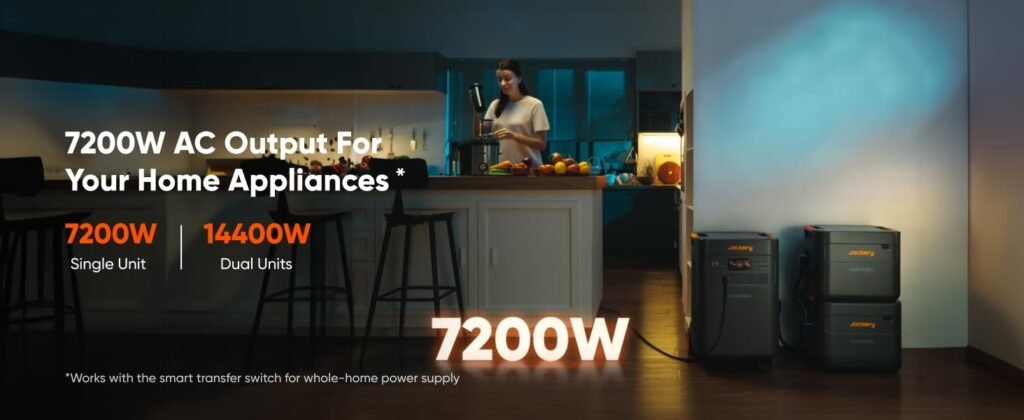
Expanding Your System: The Magic of Solar Pairing
A Jackery power station is powerful alone, but pairing it with Jackery SolarSaga panels unlocks its true potential: energy independence.
- Unlimited Refills: As long as the sun rises, you have a source of fuel. This is a game-changer for multi-day outages where a single battery charge won’t suffice.
- True Resilience: You’re no longer reliant on the grid or on finding gasoline. You have created your own personal microgrid.
- Everyday Savings: You can also use your solar generator kit to power yard equipment, patio lights, or camping trips, offsetting a small amount of your grid electricity use and saving money.
Is a Jackery Right for EVERY Home Backup Need?
Let’s be honest and fair. A portable power station has its limits.
- It won’t power your entire house. You cannot (and should not try to) hardwire it into your home’s electrical panel to run your central AC, electric oven, or water heater. It’s designed for selective, essential device backup.
- Limited Runtime for High-Wattage Devices. While it can run a fridge, it will drain the battery relatively quickly. This is where solar recharging becomes critical.
- Upfront Cost: A quality Jackery kit with sufficient capacity and solar panels is a significant investment, though often comparable to a quality installed transfer switch and gas generator.
For whole-home backup, a permanently installed standby generator or a full-home battery system like a Tesla Powerwall is the solution. But for its cost, versatility, and simplicity, a Jackery offers the most accessible entry point into reliable backup power.

The Future of Home Energy is Here
Jackery isn’t just selling a product; it’s selling a philosophy. A philosophy of preparedness, independence, and sustainability. In 2025, we’re seeing a massive shift towards decentralized energy. People are taking power into their own hands—literally. With advancements in solar panel efficiency and battery technology, these systems are only getting more powerful, more affordable, and more essential.
Making the Decision: Your Checklist for Buying
Ready to invest in your peace of mind? Ask yourself these questions:
- What are my absolute essentials? (Make a list of devices and their wattages).
- What is my budget?
- Do I want the ability to recharge with solar? (Hint: The answer should be yes).
- Where will I store it, and how often will I use it beyond emergencies?
Based on your answers, you can choose the perfect Jackery model to become the silent guardian of your home.
Conclusion: Power Your Essential Devices with Confidence
The world can be an unpredictable place. The weather, the grid, and life itself can throw curveballs. But your power supply doesn’t have to be one of them. A Jackery Essential Home Backup system is more than just a piece of technology; it’s an insurance policy for your modern life. It’s the guarantee that you can keep your family safe, connected, and comfortable no matter what happens outside your window.
It represents a shift from vulnerability to resilience, from dependence to a quiet, confident independence. So, the next time the lights flicker, you won’t feel a pang of anxiety. You’ll simply reach for your Jackery, plug in, and carry on. Now that’s true power.
FAQs
- Can a Jackery power station run my entire central air conditioning system?
No, it cannot. Central AC units require a massive surge of power (often thousands of watts) to start up and continue running. Jackery power stations are designed for smaller, essential appliances and electronics. You would need a permanently installed whole-home generator for that purpose. - How long does it take to charge a Jackery Explorer 2000 Pro with solar panels?
With optimal, direct sunlight, you can fully charge an Explorer 2000 Plus in as little as 5.5 hours using 6x SolarSaga 200W panels (for a total of 1200W input). With fewer panels, it will take longer. Using a standard wall outlet, it takes about 2 hours. - Is it safe to leave my Jackery power station plugged in and charging all the time?
Yes. Jackery products are built with advanced Battery Management Systems (BMS) that protect against overcharging, overheating, and short circuits. You can leave it plugged into a wall outlet indefinitely to ensure it’s always at 100% when an outage occurs. - What is the lifespan of a Jackery power station’s battery?
Jackery lithium-ion batteries are rated for a high number of charge cycles. For example, the Explorer 2000 Plus battery retains over 80% of its capacity after 1000 full cycles if you use it once a week for a full drain and recharge, which translates to over 19 years of reliable service. - Can I use another brand of solar panel with my Jackery power station?
While it is technically possible, Jackery recommends using their proprietary SolarSaga panels for optimal performance and safety. They are designed to match the voltage and charging input of Jackery stations perfectly and include built-in kickstands and protective carrying cases for ease of use.

| Jackery Solar Generator Collections | |
|---|---|
 |
 |
| Amazon Discount | Walmart Discount |




